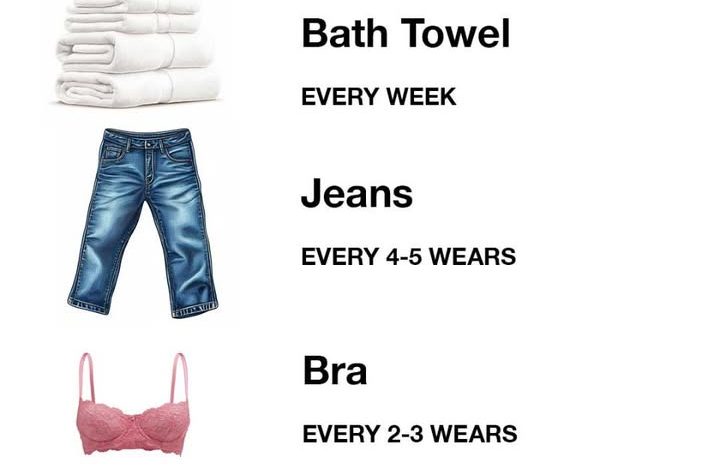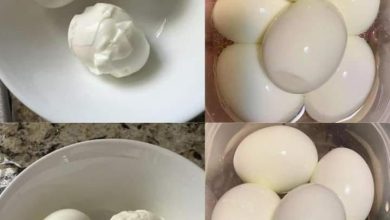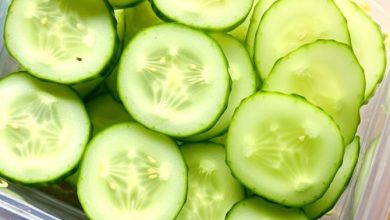Most do this wrong. Here’s how often to clean everything

Cleaning is often viewed as a simple chore, but it’s a fundamental practice for maintaining a healthy and comfortable home. Going beyond just making a space look neat, a consistent cleaning routine plays a critical role in eliminating germs, allergens, dust, and other pollutants that naturally accumulate over time. This proactive approach helps to significantly reduce the risk of illness and can even improve your overall quality of life. A clean, organized environment can also have a profound impact on your mental well-being, as clutter and dirt are often linked to feelings of stress and anxiety. The first and most crucial step toward creating a healthier home is to truly understand the importance of regular cleaning.
ADVERTISEMENT
The Science Behind Cleaning Schedules
Many people wonder about the “right” way to clean, and the truth is, the frequency of cleaning is just as important as the act itself. Not everything needs to be cleaned with the same intensity or on the same schedule. Different items and areas in your home have varying levels of exposure to dirt and bacteria, so they require different levels of attention. For example, things that come into direct contact with our skin or food, like kitchen sponges or bath towels, naturally need more frequent cleaning than something like a light fixture.
ADVERTISEMENT
By following a smart cleaning schedule, you can find a balance that keeps your home both clean and efficient. This prevents over-cleaning, which can waste valuable time and resources, as well as under-cleaning, which can lead to a buildup of germs and other health issues. Adhering to these recommended frequencies ensures you’re maintaining a hygienic living space without unnecessary effort.
ADVERTISEMENT
Your Ultimate Checklist: Top 20 Items and Their Optimal Cleaning Schedules
To help you create a practical and effective cleaning routine, we’ve put together a detailed list of 20 common household items and their recommended cleaning schedules. These guidelines are based on expert advice and are designed to make your home maintenance efforts more manageable.
- Bath Towels: Wash Once a Week Towels absorb a lot of moisture and skin cells, making them a perfect breeding ground for bacteria if not washed regularly. Washing them once a week in hot water helps to sanitize them and keep them fresh. If you live in a warm or humid climate, or if your household has many people, you might consider more frequent washes.
- Purses and Bags: Wipe Down Weekly Think about all the places your purse or bag sits throughout the day—from public benches to restaurant floors. They can easily pick up dirt and germs. Wiping down your purse with a disinfectant wipe every week can help prevent the spread of bacteria and keep it looking its best.
- Bras: Wash Every 2-3 Wears Bras are in constant contact with your skin, absorbing sweat and oils. Washing them every 2-3 wears is key to maintaining their hygiene and elasticity. Always use a gentle detergent and remember to air-dry them to extend their lifespan.
- Jeans: Wash Every 4-5 Wears Jeans are durable and don’t need to be washed often, which is good for both the fabric and the environment. Washing them every 4-5 wears helps them maintain their color and fit. For the best results, turn them inside out and wash in cold water to prevent fading.
- Pillows: Clean Every 3-6 Months Pillows can easily harbor dust mites and other allergens. Washing them every 3-6 months in hot water can help eliminate these issues and keep them fluffy. Always check the care label on your pillow for specific washing instructions.
- Bed Sheets: Wash Every Week Your bed sheets collect sweat, skin cells, and dust mites. For this reason, weekly washing is essential for hygiene. Use hot water to effectively kill germs and allergens, ensuring a clean and healthy sleeping environment.
- Kitchen Sponges: Sanitize or Replace Weekly Sponges are a well-known source of bacteria in the kitchen. To keep your cooking space hygienic, you should either replace your sponge weekly or sanitize it daily. You can do this by microwaving it for a minute (when it’s wet) or soaking it in a diluted bleach solution.
- Toothbrushes: Replace Every 3-4 Months Over time, toothbrush bristles wear out and they can accumulate bacteria. Replacing your toothbrush every 3-4 months, or sooner if the bristles look frayed, ensures you’re getting an effective cleaning every time you brush.
- Carpets: Professionally Clean Every 6-12 Months Carpets act as a large filter for your home, trapping dirt, dust, and allergens. Having them professionally cleaned every 6-12 months helps maintain their appearance and improves your indoor air quality.
- Curtains: Wash Every 3-6 Months Curtains can collect dust and allergens just like carpets. Washing or dry cleaning them every 3-6 months helps keep them fresh and reduces airborne allergens in your home.
- Refrigerator: Deep Clean Every 3-4 Months A regular deep clean of your refrigerator prevents mold and bacteria growth. Empty and clean all the shelves and drawers with a mild detergent and water every 3-4 months to keep it sanitary.
- Oven: Clean Every 3-6 Months Ovens can accumulate grease and food residue. Cleaning them every 3-6 months, or more frequently if you cook a lot, helps maintain efficiency, prevent odors, and reduce the risk of smoke from burnt residue.
- Windows: Wash Every 6 Months Cleaning your windows every 6 months removes built-up dirt and grime, allowing more natural light into your home and giving you a clearer view.
- Shower Curtains: Wash Every Month Shower curtains are a common place for mold and mildew to develop. Washing them monthly with hot water and vinegar helps keep them clean and mold-free.
- Mattresses: Clean and Rotate Every 6 Months Mattresses can also harbor dust mites and allergens. Vacuuming and rotating them every 6 months helps maintain their condition and hygiene.
- Light Fixtures: Dust Every 3-6 Months Dust and even small insects can accumulate on light fixtures, dimming the light and contributing to household allergens. Cleaning them every 3-6 months improves the light quality and air in your home.
- Remote Controls: Disinfect Weekly Remote controls are touched by everyone and are a major source of germs. Wiping them down with a disinfectant wipe weekly helps prevent the spread of bacteria.
- Computer Keyboards: Clean Weekly Keyboards can easily collect dust and germs. Cleaning them weekly with compressed air and disinfectant wipes helps maintain hygiene, especially if they are used often.
- Cell Phones: Disinfect Daily Your cell phone is one of the dirtiest items you own. It’s handled constantly and can harbor a significant amount of bacteria. Wiping it down daily with a microfiber cloth and a gentle disinfectant helps prevent the spread of germs to your face and hands.
- Makeup Brushes: Wash Weekly Makeup brushes can accumulate oils, bacteria, and product residue, which can be bad for your skin. Washing them weekly with a gentle cleanser helps maintain your skin’s health and preserves the quality of the brushes.
The Big Picture: Creating a Cleaner, Happier Home
By consistently following these suggested cleaning schedules, you can ensure that your home remains a safe, clean, and healthy environment for you and your family. Regular cleaning not only improves the appearance of your living space but also has a significant positive impact on your overall well-being. Establishing a routine based on these guidelines can help you become more organized and efficient in your cleaning efforts, which ultimately leads to a more comfortable and inviting home. This isn’t about being a perfectionist; it’s about being proactive and smart about home maintenance.




